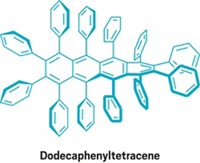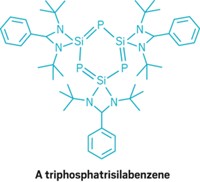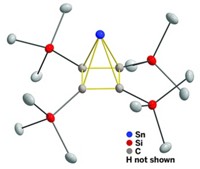Advertisement
Grab your lab coat. Let's get started
Welcome!
Welcome!
Create an account below to get 6 C&EN articles per month, receive newsletters and more - all free.
It seems this is your first time logging in online. Please enter the following information to continue.
As an ACS member you automatically get access to this site. All we need is few more details to create your reading experience.
Not you? Sign in with a different account.
Not you? Sign in with a different account.
ERROR 1
ERROR 1
ERROR 2
ERROR 2
ERROR 2
ERROR 2
ERROR 2
Password and Confirm password must match.
If you have an ACS member number, please enter it here so we can link this account to your membership. (optional)
ERROR 2
ACS values your privacy. By submitting your information, you are gaining access to C&EN and subscribing to our weekly newsletter. We use the information you provide to make your reading experience better, and we will never sell your data to third party members.
Synthesis
Fruitful Phosphirenes
Polythiophenes with organophosphorus spacers could boost optoelectronic materials
by Stephen K. Ritter
September 18, 2006
| A version of this story appeared in
Volume 84, Issue 38

François Mathey of the University of California, Riverside, and colleagues have synthesized a new type of polythiophene building block by replacing a commonly used five-membered phosphorus heterocycle spacer group with a three-membered phosphorus heterocycle (Organometallics, DOI: 10.1021/om060675w). These thiophene-phosphirene units are expected to add another dimension to the field of incorporating phosphorus atoms into conjugated polymer backbones to modulate the properties of thin films for optoelectronic applications.
Mathey's group has synthesized thiophene oligomers containing the five-membered phosphole rings, but these compounds "are never very easy to prepare" and the pure phosphole oligomers have limited stability, he notes. Mathey and coworker Tran Huy then hit on the idea to try the smaller phosphirene rings by using chemistry Mathey's group developed 25 years ago to make the first phosphirene. Because of the smaller ring size, the electronic properties of phosphirenes are quite different from those of phospholes: The phosphorus center is electrophilic rather than nucleophilic.
The thiophene-phosphirene complexes are made by transferring a C6H5PW(CO)5 moiety from a tungsten phosphanorbornadiene complex to the triple bond of an alkyne. In one approach, the researchers start with a bithiophene bridged by a carbon-carbon triple bond, which leads to the phosphirene ring between two thiophene rings. In another approach, they start with a thiophene substituted with two alkynyl groups, leading to thiophene substituted with two phosphirene rings.
These complexes are "of great significance" for developing π-conjugated organic materials, comments Thomas Baumgartner of the University of Calgary, whose work includes investigating dithienophosphole-based materials. Tuning the electronic band gap of the materials "is an essential issue," he says, and the synthesis of novel materials, such as those of Mathey and his coworkers, "is the first and key step."





Join the conversation
Contact the reporter
Submit a Letter to the Editor for publication
Engage with us on Twitter